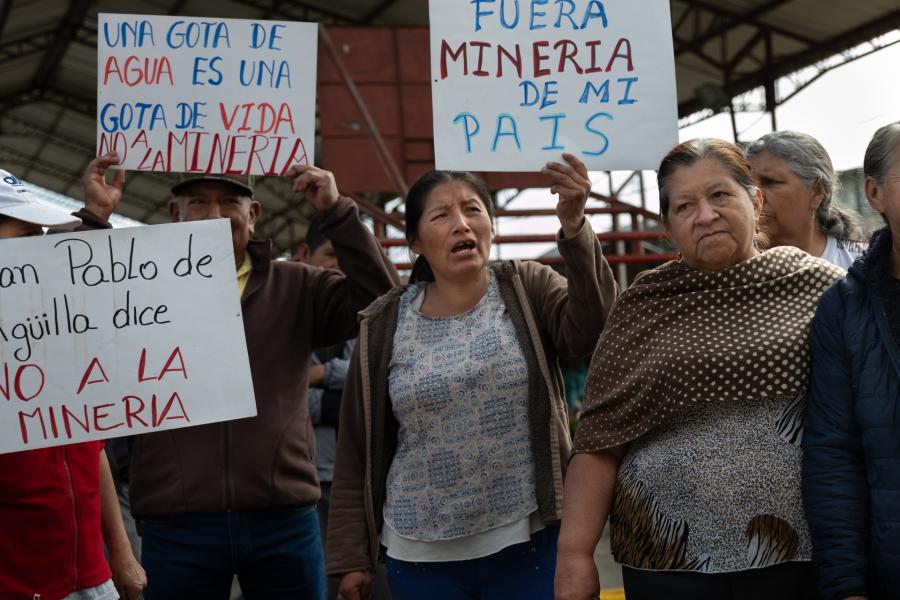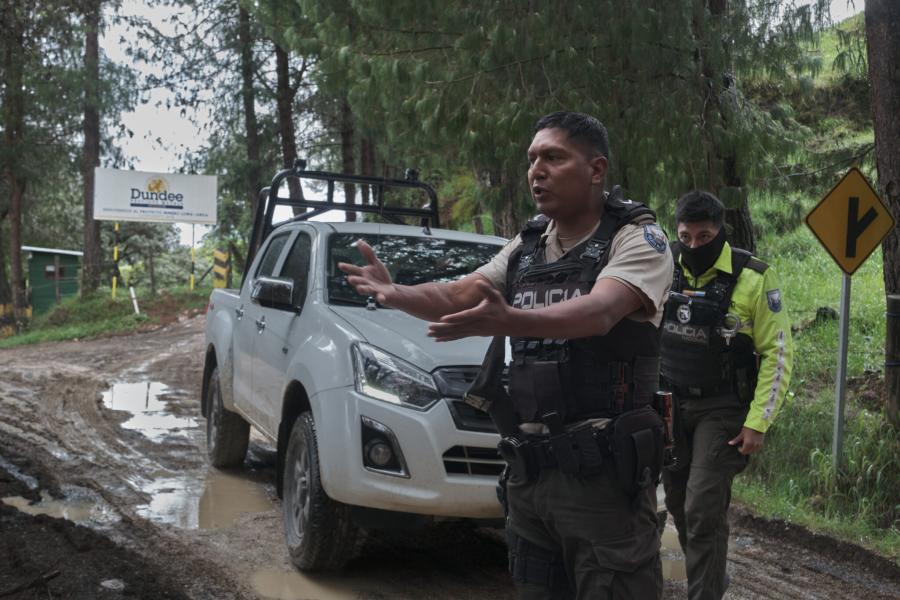When Donald Marshall Jr. dipped his eel nets into a Nova Scotia river, he knew exactly what he was doing. The Mi'kmaq man harvested close to 500 pounds of eels, then sold his catch. Soon afterward, he was charged by federal fisheries officers with fishing out of season, fishing with illegal nets, and selling illegal fish. Marshall Jr. took the government to court. He maintained that according to the contents of a specific treaty, he had the right to fish for a living. After years of appeals, Marshall Jr. was acquitted by the Supreme Court of Canada on September 17, 1999, in what is now seen as a landmark ruling for aboriginal peoples across the Maritimes. Marshall's defiant act forced Canadians to recognize the Mi'kmaq Treaty right to fish. This recognition does not necessarily mean that the Mi'kmaq have the freedom to act upon it, however.
The Supreme Court decision to uphold treaties signed between the British Crown and Mi'kmaq, Malisseet, and Passamaquoddy Chiefs in 1760 and 1761 sent immediate ripples through the fishing villages of Nova Scotia, New Brunswick, and Prince Edward Island -- the Maritime provinces of Canada -- where the lobster fishery is a lifeline. In the days and weeks following the ruling, it was apparent the interpretation of treaty rights has more to do with one's personal sense of history than with an analysis of the literal facts of the case. Because this ruling tampers with the mainstream notion of modern Canadian identity -- a nation constructed by many immigrant peoples who enjoy equal rights and privileges under one set of laws -- the reaction to it has been swift, urgent, and in some cases violent.
When a few days after the Marshall ruling the people of Burnt Church First Nation (New Brunswick) set lobster traps out of season, nearby "white" communities took this to be a taunting act of lawlessness. Almost overnight, neighbors who had peacefully co-existed for generations were turned into enemies. Out of frustration, some 3000 "Native" lobster traps were destroyed or cut loose by 150 local fishermen.
While the rest of society argued back and forth on the merits of Marshall, the Mi'kmaq of Lennox Island (Prince Edward Island) were making collective decisions about how they would access the lobster fishery. At first, they fished in the off-season, observing industry standards and setting a trap limit of 15 for each household. This plan worked for a while, until the fishers had no place to sell their catch. Non-aboriginal fishers had persuaded lobster buyers to stop buying from the Indians.
In August, 2000, Burnt Church First Nation held an on-reserve vote to manage its own lobster fishery with 1,500 traps. Within days of setting the traps (again, in the off-season), violence erupted on the waters, involving fisheries enforcement officers, local commercial fishers, and aboriginal people. In the end, hundreds of traps were seized by federal fisheries officers, two Indian boats were sunk, four more seized, and sixteen Indians arrested. One fisheries officer was also injured in the confrontation.
These conflicts painfully illustrate the gaps in accountability that persist in Canadian law and society. The Marshall ruling was unequivocal in its stance on aboriginal treaty right to derive a moderate living from fishing, hunting, and trapping. Yet, non-aboriginal interests quickly seized on details of the ruling that would curtail benefits to aboriginal people; namely, that a treaty right is a right that can be regulated, and that it could not be used for the accumulation of wealth. In other words, the ruling protects the powers that be.
"Marshaling" the Facts
The federal government's response to Marshall was to hire two official negotiators -- one to deal with the aboriginal community, and one to deal with the commercial fishing sector. The term "negotiator" became a source of ill feeling among people of both groups: the former, because it implied that the treaty right was subject to discussion; the latter, because it was plainly obvious that they had no real negotiating power at all. The negotiators were instructed to come up with a formula to enable the smooth access of aboriginal people to the lucrative lobster fishery. This move instantly put aboriginal and non-aboriginal groups at odds. All of a sudden, there was a pressing need to retire commercial fishermen from the lobster fishery and to impose limits on the number of traps that could be fished by aboriginal groups. This strategy also demanded that aboriginal fishers play by the accepted rules of seasons and size limits.
A fund of Cnd$500 million was announced, presumably, to assist in the implementation of the strategy. The federal government directed these monies to a license buy-out program, at a cost of Cnd$350,000-500,000 per license. The buy-out program is a public policy based on a system of limited-entry licensing which insists that for every one in, there must be one out. Instead of easing the retirement of older fishermen, this announcement led to an alarming grab for money among commercial fishers, many of whom submitted inflated offers. The government response was indignation. As the 2000 fishing season approached and fishermen continued to hold out with their offers, the federal government was being backed into a corner. After having negotiated access agreements -- you sign or you don't fish -- with most bands (34 in the Maritime region), it was becoming apparent that the targeted number of buy-outs would likely not be met.
The limited-entry buy-out policy has no basis in conservation or economic fairness. Yet, these two arguments are the most commonly used against aboriginal entrants to the lobster fishery. Some commercial lobster fishermen in PEI secretly feel that the trap limit of 300 could be dropped to 250. This view comes from a shared realization that the capacity to fish exceeds the harvestable stock, and is being reflected in landings. A port-based, volunteer trap reduction program might be a fairer and more efficient way to deal with aboriginal entrants to the fishery. However, in a climate of deep distrust and fear, this outcome is highly unlikely.
Another contentious point is the timing of the fishery. Throughout the Maritimes, there are strict seasons on lobster fishing along geographic lines. A few fishermen have begun to question the rationale of seasons which, by and large, seem to serve markets more than the biology of lobsters. Yet, the idea of aboriginal people fishing out of season is unconscionable to government regulators and commercial fishers alike. They ignore existing inconsistencies. (On opposite shores of the same body of water, as is the case in the Northumberland Strait, for example, different seasons apply even though lobsters travel freely throughout.) Instead, detractors resort to pseudo-scientific posturing over stock collapse ("If the Indians can fish commercially too, the resource will be exhausted") as a way to uphold the status quo. The belief that lobster seasons protect lobster stocks has gone unquestioned by most commercial lobster fishers -- even though it begs review.
Perhaps most disheartening about this strategy is that it thwarted the positive solutions that some aboriginal and non-aboriginal groups had begun to draft together. These included agreements to gradually build up the capacity of the aboriginal fishing fleet, and to fish within agreed-upon seasons and rules. The sound pragmatism of these arrangements went a good distance toward not only ensuring the smooth transition of aboriginal people into the commercial lobster fishery; it also represented a real step toward meaningful co-management of the fishery. The flexing of power on the part of the federal authority vis-à-vis what are really local issues that require local solutions has arguably aggravated relations between these two groups in the last 18 months.
This parochialism has also translated to reductionist policies on reserves, where the lines between status/non-status and on-reserve/off-reserve Indians have been reinforced. As Chiefs were made to sign on to these restrictive compacts, the result was to bar access to those who live off-reserve, even though they are recognized members of that band.
Marshall has thus brought into view the true oppressor in this case: the Indian Act. This law has been the blueprint for the assimilation of aboriginal people into Canadian society since the 1950s. With an Indian Act band system in place that negates Mi'kmaq forms of governance and sovereignty, how far do landmark cases such as Marshall go toward true self-determination? Without a major re-writing (or replacement) of the Indian Act, important gains made via the courts will almost cancel out in the political arena.
The "Just" Society
When Canada repatriated its Constitution in 1982, it gave explicit recognition of aboriginal and treaty rights. This symbolic gesture would later pave the way to Supreme Court cases such as Sparrow (1990), Badger (1996), and most recently Marshall (1999), all of which have produced rulings that reaffirm the distinct status of aboriginal people in Canada and the special relationship they have with the Crown. Some two decades later, we see that this constitutional protection has led to an incremental realignment of power between aboriginal and settler nations in Canada. As the stakes increase, however, it is apparent that our highest public agencies are turning to new methods to curb this sharing of power.
Within days of the Marshall ruling, one of the interveners in the case (a fishermen's coalition) applied for a motion of rehearing and stay. Although the group acted in violation of the Court's rules, the Supreme Court responded by issuing a 19-page interpretation of the ruling. This rare move was considered by many in the legal community to be an over-extension of the Court's authority. Is this what we can come to expect from our federal institutions as aboriginal people take decisive steps to reclaim control over the resources they need to live in a dignified way?
Conclusion
The Supreme Court of Canada's decision to uphold a 240-year-old treaty between the Crown and a distinct group of people seemed inconceivable to many Canadians, who rejected the ruling as a judgment founded not so much on legal argument, but rather a narrow view of history. We must, however, be keenly aware of the historical basis for this unique and complex relationship in order to respond appropriately.
Historical redress -- the attempt to right the wrongs of the past, or to recognize systemic acts of mischief or omission -- is a delicate and sometimes dangerous road to travel, particularly when the outcome would result in a reversal of injury born by people who see themselves as no more than historical bystanders. What cost is society willing to pay as a whole to a group that has been systemically harmed? And how will the spirit of the treaties of 1760 and 1761 translate today? These are some of the very difficult questions that aboriginal people and Canadians will have to grapple with for years to come.
What is patently clear from the Marshall decision is that, in the short term, the burden of redress is being felt by a very small group of people: Maritime fishers. If there is to be a fair outcome to Marshall, the cost will have to be spread to the whole. Violent incidents between fishing communities are symptomatic of a lack of response by society to assume its share of the responsibility.
By the same token, although First Nations are right to wax victorious in this monumental decision, they too will have to carefully consider the way in which these rights can be applied in a modern-day context. Neither group can afford to interpret or apply these treaty rights in a way that is either ahistorical or contextually blind.
Article copyright Cultural Survival, Inc.



